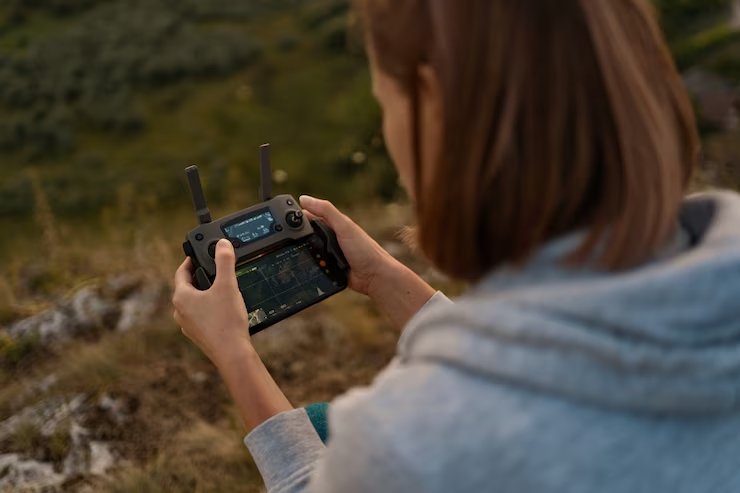A Guide to Finding Reliable Environmental Equipment Suppliers
Discover essential tips for choosing reliable environmental equipment suppliers. Learn how to find quality products, trusted service, and sustainable solutions for your needs.

Environmental monitoring is an important element in the modern world, in sectors ranging from agriculture and energy to manufacturing and public health. With the increasing demand for reliable information about air quality, water contamination, radiation levels, and climatic conditions, the need to select the best Environmental monitoring equipment arises. But with numerous suppliers available, it is not simple to select a good one. This guide takes you through the major factors in selecting good environmental monitoring equipment suppliers.
1. Know Your Monitoring Needs
Before pursuing any supplier, determine precisely the parameters you want to monitor. These may be
-
Air composition (e.g., particulate, VOCs, CO₂)
-
Water quality (i.e., pH, turbidity, heavy metals)
-
Soil conditions (e.g., water content, nutrient density)
-
Noise pollution
-
Radiation or electromagnetic fields
-
Weather/climate information (e.g., temperature, humidity, precipitation)
Knowledge of your particular application will enable you to choose the proper equipment and exclude suppliers that are not capable of providing adequate solutions.
2. Check Certifications and Compliance
A good supplier needs to provide equipment that is within relevant national or international standards. Look for:
-
ISO certifications (such as ISO 9001 for quality management)
-
CE or FCC labels on safety and electronic standards
-
Environmental or calibration certifications (e.g., NIST traceability)
These certifications guarantee that equipment is of high quality and performance standards.
3. Evaluate Technical Specifications
Compare technical specifications to confirm the equipment will meet your range and precision needs. Consider:
-
Sensor precision and sensitivity
-
Data logging and transmission functionality (e.g., remote access, real-time)
-
Battery life and power requirements
-
Operating temperature and weather resistance
-
Calibration schedules and procedures
Always compare the specifications to the environmental conditions and use cases you will be experiencing.
4. Assess Build Quality and Durability
Environmental monitoring equipment is subjected to harsh conditions. Thus, equipment longevity is critical. Assess the:
-
Shelter material (e.g., corrosion-resistant metals, weather-resistant plastics)
-
Dust and water sealing Ingress Protection (IP) rating
-
Shock and vibration resistance
-
Maintenance needs and servicing intervals
Suppliers that offer field-tested, ruggedized gear will probably be more reliable in the long run.
5. Request Technical Support and Service
Good after-sales service can make all the difference. Look for suppliers who offer:
-
Technical documentation and handbooks
-
Ready availability of technical support or customer service groups
-
Warranty protection and return guarantees
-
Availability of replacement parts and consumables
-
On-site support or remote diagnostic solutions
A quality supplier will be happy to walk you through the equipment's life cycle.
6. Compare Prices and Value
While cost is a concern, it must never come into it at the expense of quality. Add value by considering:
-
Total cost of ownership (purchase cost + maintenance + operation)
-
Integrated features (e.g., cloud integration, software access)
-
Long-term lifespan and upgrade options
-
Bundled services (i.e., calibration, training)
A lower-cost device that fails or requires frequent recalibration can become more expensive over time.
7. Check Customer Reviews and Case Studies
Search for third-party assessments and industry case studies to estimate real-world performance. Although business names and sites are not directly referenced, you can usually discover them from
-
Scientific journals
-
Trade publications
-
Regulatory agency reports
-
Collaborations at universities
These sources may highlight positive comments as well as overall issues with a specific type of equipment.
8. Look for Customization and Integration Options
Some projects may require tailor-made solutions. An ideal supplier should offer:
-
Special sensor configurations
-
Third-party data platform or API integration
-
Merging automation and IoT solutions
-
Potential directions for improving sensor networks
This flexibility future-proofs your investment and accommodates shifting monitoring requirements.
9. Consider Environmental Impact and Sustainability
If sustainability is of top priority, consider suppliers in terms of
-
Utilization of eco-friendly materials
-
Low power consumption design
-
Recyclability and disposal options
-
Ethical procurement of components
-
Strategies to reduce packaging waste
Ethical suppliers will likely match their production activities with sustainable concerns.
10. Request a Product Demonstration or Trial
Before you buy a large item, request a product demonstration or trial period. This allows you to:
-
Test the equipment in actual conditions
-
Evaluate data reliability and validity
-
Guarantee user interface and software usability
-
Gather comments from your peers
A good supplier will normally be willing to show the value of their product themselves.
Final Thoughts
Selecting the optimal environmental monitoring equipment suppliers is an investment that affects the quality of your data, the productivity of your operations, and your cost of ownership over time. By doing your research and comparing suppliers on technical capability, support, and sustainability, you position your company for success. Keep in mind that the best environmental monitoring equipment suppliers are those that provide quality equipment, as well as integrity, transparency, and dedication to your environmental mission.
What's Your Reaction?

















.jpg)